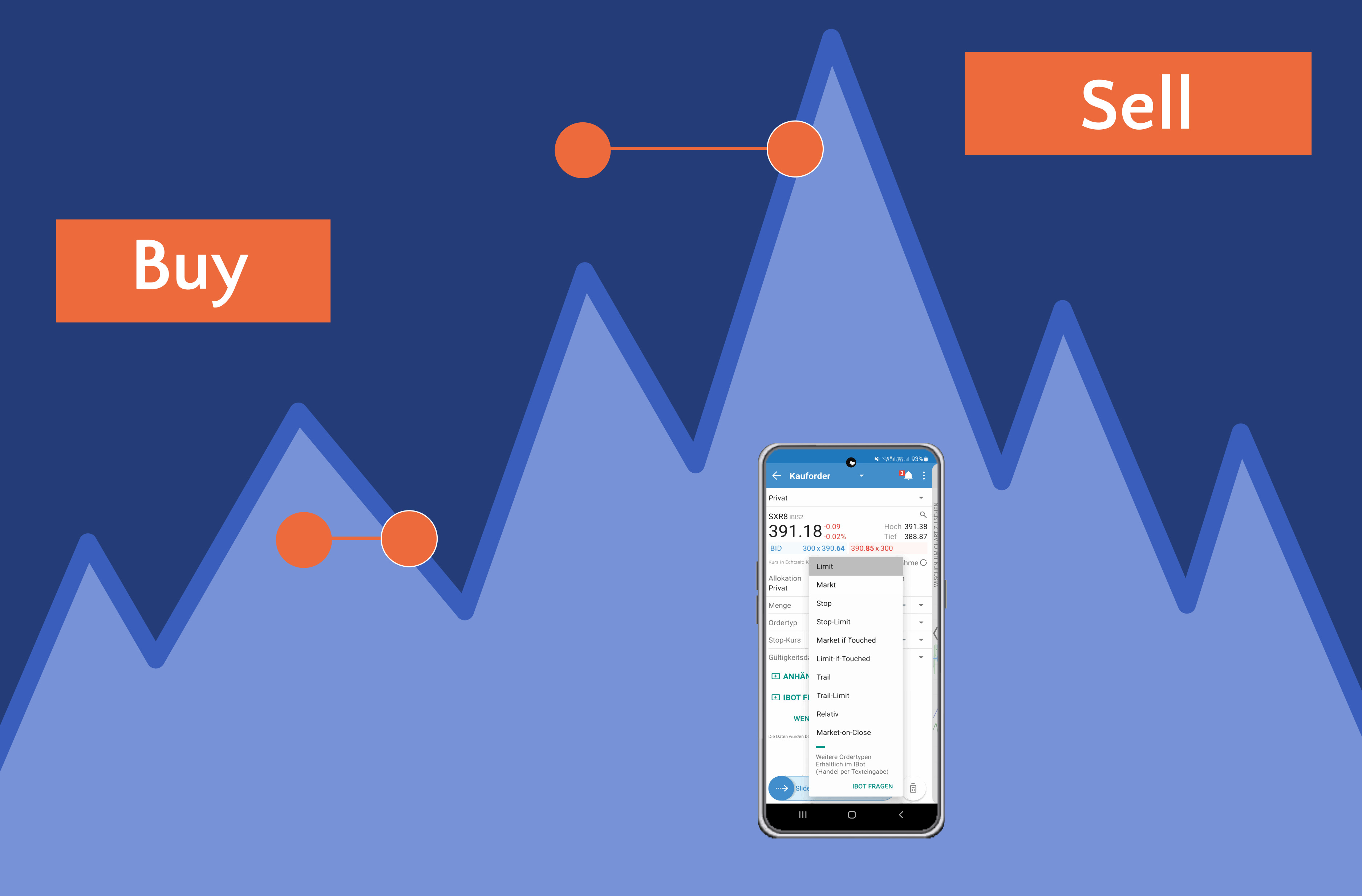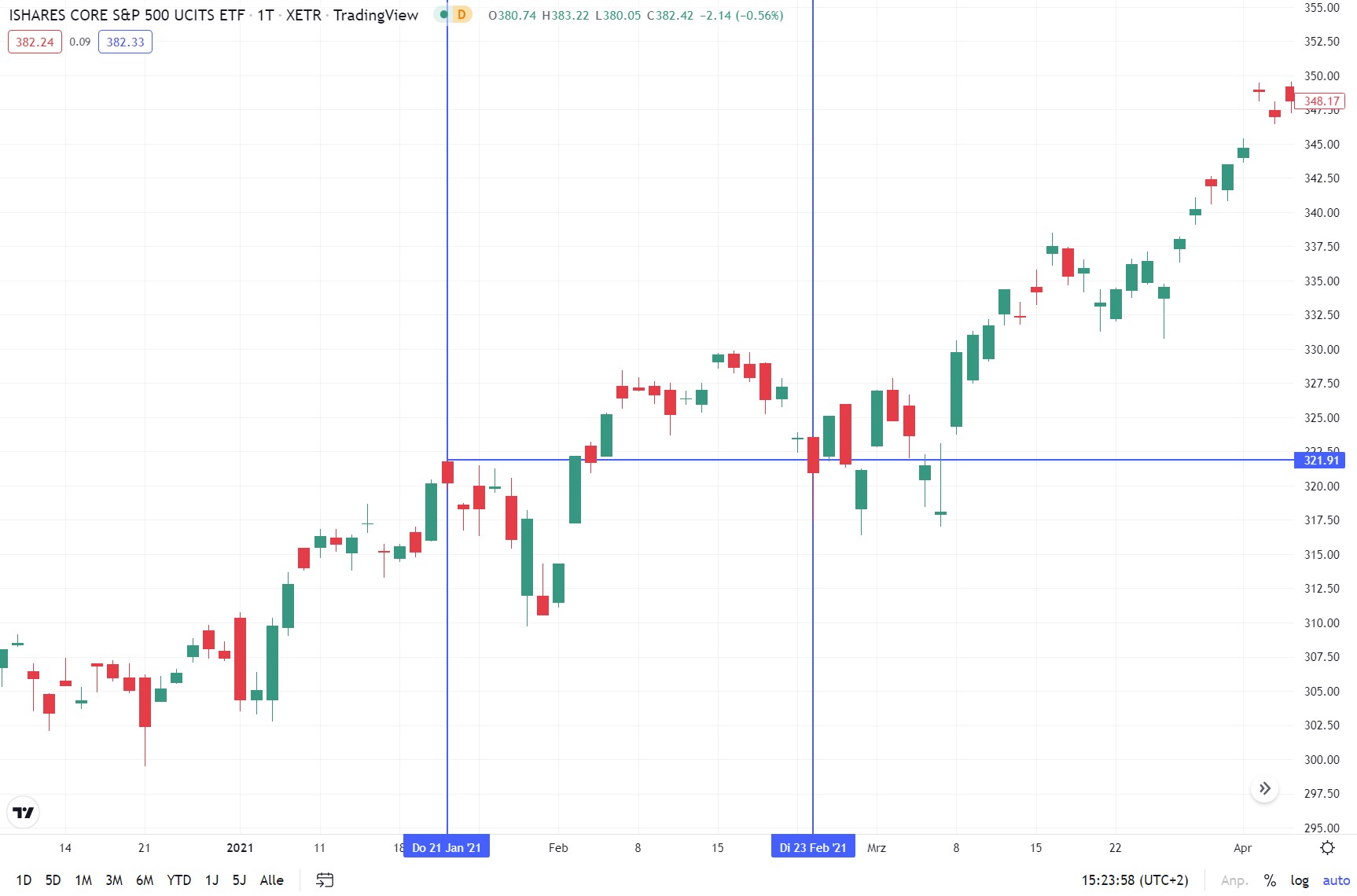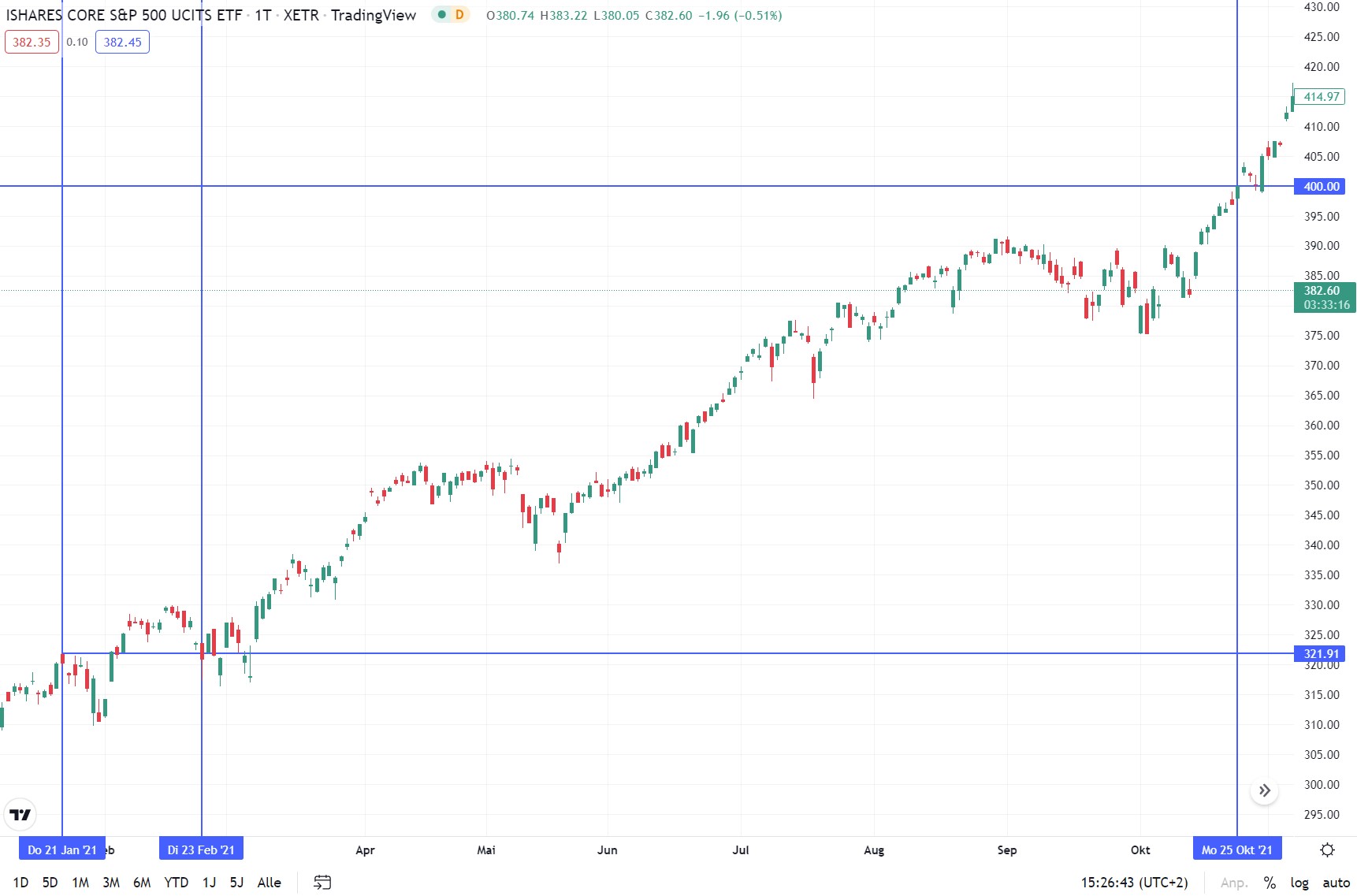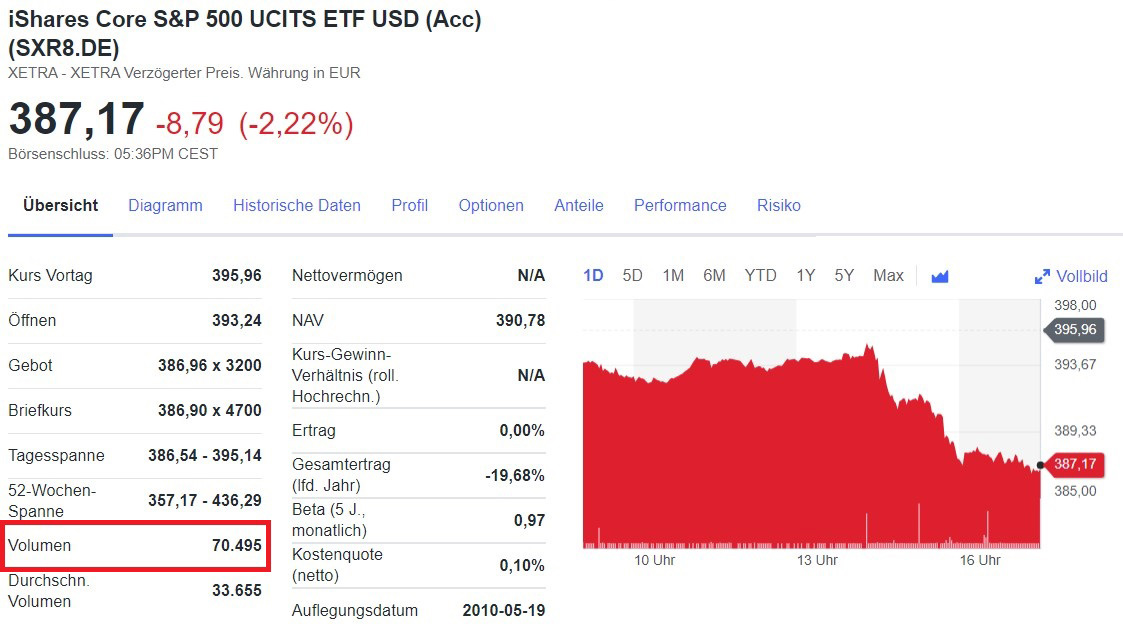You want to execute your trades with a Limit Order because you've heard that it allows you to take profits above the current price. But what does Limit Order mean? How does an Order Limit work and when do you use it? For me, the Limit Order is the second most important order type. You will learn how to achieve higher profits with this order.

Limit Order types
With the Limit Order types you control the buy or sell price. Like a Stop Order, there are two sub-types: the Buy Limit Order and the Sell Limit Order.
The Buy Limit Order allows you to buy a financial product at a lower price. With the Sell Limit Order you set a price at which you want to sell a security.
The advantage of the Limit Order is that negative slippage can never occur, because this order type guarantees a specific or better price. With a Limit Order, you don't have to constantly follow the markets.
The downside: the Limit Order will not be executed if the price does not cross your specified price. Your position is never opened or closed and you miss an opportunity to trade.
The functioning of the Limit Order is the same for all financial instruments. There is no difference between shares, ETF's, CFD's, certificates, options or futures.
What is a Limit Order?

A Limit Order is an order type that you can select from your broker alongside a Stop Order, Market Order, or Stop Limit Order. So much for the Limit Order definition.
With a Limit Order, you open or close positions at desired rates, which you freely choose based on your assumptions. So, you instruct your broker to buy or sell a financial product at a price you set or better.
This gives you the opportunity to take profits at higher prices or to buy more securities at lower prices.
Tip #1
With the Limit Order you cannot hedge your position against losses. I only use the Limit Order to lock in profits to reach my planned goal.
What is a Buy Limit Order?
A Buy Limit Order is an order that sets a purchase price. The purchase price should be below the current market value. Your Limit Buy Order will be executed when the price falls below it: you buy the financial product and open a position.
So, you use a Limit Buy Order when you expect prices to fall in the short term and you want to buy at a lower price. This approach allows you to make higher profits because your entry price is lower than the price at the time you placed the order in the market.

Tip #2
You can set your Buy Limit at the level of the last high you see on the daily chart. This works in many situations.
What is a Sell Limit Order?

A Sell Limit Order is an order that defines a sell price that is higher than the current price. With the Sell Limit Order you sell or close a position. It is executed when the price exceeds the set limit price.
With a Limit Sell Order you can achieve your trading goals. You define when you want to close your position. It is at this point that you set your sell limit price. Once your position has been opened, be it a Stop Buy Order, Limit Buy Order or Market Order, you place a Limit Sell Order in the market.
You can now be confident that you're making a profit and not get frustrated because prices do fall and you don't know when to get out.
Tip #3
If, like the pros, you want to plan your trades right from the start, use a bracket order. This combined order connects your purchase of the position with the subsequent risk hedging (Stop Loss) and the target (Sell Limit).

Tip #4
One way to define your target price is to build a trend channel. To do this, connect the previous highs together. Your goal is then on this line in the future.
How does a Limit Order work?
The following information is stored in the Limit Order:
The security (e.g. an ETF on the S&P 500)
The Limit price
The contract size
Validity of the order (usually GTC – Good till cancelled)
If the price of the security reaches the desired limit price, the order will be executed at the defined price or better. The prerequisite for this is sufficient liquidity at the current time. If the rate never reaches the set price, the order will not be executed.
How do you place a Limit Order with your broker?
With most brokers, you first choose whether you want to buy or sell a position. Only then do you select the order type – in this case Limit Order.
Tip #5
Brokers cannot allow Limit Orders if they are illogical. This means that if a Buy Limit is placed at a higher rate than the current rate, you will be alerted to the error prior to placement.
You proceed as follows when placing the Limit Order:
Choose the trading product, such as an ETF on the S&P 500.
Indicate whether you are buying or selling.
Choose under the item Order Limit.
Determine the course, number and validity.
Place order: You click "Place order" or "Close order".
Important NOTE
Limit Order with a broker
Most brokers do not indicate whether it is a Buy Limit Order or a Sell Limit Order as this was defined with the previous selection (buy or sell).
With the selection 1. buy and 2. Limit Order, the Buy Limit Order results. Selecting 1. Sell and 2. Limit Order results in the Sell Limit Order.
How long is a Limit Order valid?
The validity of the Limit Order depends on your broker's policy. Many brokers default Limit Orders to the current trading day (good-for-day). Unexecuted orders are then deleted at the end of the day.
Other brokers offer a certain number of days of validity: for example 30 days or 60 days. The order is therefore valid until a certain date (good-till-date).
The third option is unlimited validity. The order limit is then valid until it is executed or canceled by you (good-till-cancelled).
Limit Order costs
With many online brokers, the order costs are the same for all order types. This means there is no longer any difference between the cost of a market order or a Limit Order. Due to the digitization of the broker landscape, the order costs have fallen rapidly and some shares or ETFs can even be traded free of charge.
Before you decide on a broker, be sure to find out about the respective order costs and also about the financial products that you can trade with the broker. Because many online brokers have very low or no order costs, but not all shares or ETFs can be traded.
Tip #6
If placing a Limit Order is more expensive than a Market Order, I strongly recommend that you switch brokers.
Stock Limit Order
Buying a stock with a Limit Order is like buying a used car with a price negotiation. You only get the used car if the seller agrees to your negotiation price (limit price). Transfer to the stock market, buy or sell your shares only when your limit price is reached.
Whether you buy stocks with a Limit Order or with a Stop Order depends on your strategy. For example, if your strategy is to buy dividend stocks cheaply at areas of support, then use the Limit Order. This approach makes sense especially after stock market crashes. Because then you can get the shares very cheaply.
I personally prefer to buy with a Stop Order because my strategies are based on trend continuation after bottoming.
Market Order vs. Limit Order
A Market Order is an order type that is executed directly at the current price. While a Limit Order only comes into effect when the self-selected price is reached by the price.
An example to illustrate. A used car should cost €10,000. If you now buy the car via Market Order and pay the €10,000 directly, you are sure that you will get the car.
However, if you want to Limit Order the car for €9,000, you probably won't get the car at first. The seller expects to find another customer who will take the car at market price.
In the event that the seller does not find a buyer and the vehicle prices fall, you will receive the vehicle at the offered limit price of €9,000. You bought it 10% cheaper.
However, if the vehicle prices don't fall, you will never get the car for the price.
Difference Limit Order and Stop Order
Both order types are Single-Step Orders to buy or sell a security when a certain price is reached. The main difference between a Limit Order and a Stop Order is that they are used in reverse.
In addition, slippage never occurs with a Limit Order. But with a Stop Order, yes. This is due to the position of the limit or stop price in relation to the current price.
There is also the Stop Limit Order, which is a Two-Step Order and is more comparable to a simple Stop Order. With the Stop Limit Order, the Stop Order is activated first. Then the Limit Order is used. This allows to limit the slippage of the Stop Order.
Stop Order | Limit Order | Stop Limit Order |
|---|---|---|
A quote (Stop) | A market value (Limit) | Two price values (Stop & Limit) |
Buy: Stop price above the current price. | Buy: Limit price below the current market value | Buy: stop price above current price and limit price above stop price. |
Sell: Stop price below the current price. | Sell: Limit Price above the current price. | Sell: stop price below current price and limit price below stop price. |
With the Stop Order, you can secure your current position (sell) or build up in the direction of the trend when a certain price is exceeded (buy). | With the Limit Order you can take your profits in the direction of the trend (sell) or build up your position in a correction (buy). | Only use the Stop Limit Order to open a position (buy). This allows you to limit your slippage to the difference between the stop and limit price. |
Slippage to your detriment often occurs. | Slippage to your detriment can never occur. | Slippage is limited, but there is also a risk that the order will not be filled if there is a large jump in price. |
Limit or Stop Order? What do you use when?
You can use both order types in your trading. Each order has its function and is used in specific market situations.
You use the Limit Buy Order if you want to buy at lower prices than the current time. For example, when support is reached. Support is a strong reversal point in price in the past.
You use the Limit Sell Order if you want to sell at higher prices than the current time. So, for your target price after the purchase.
It is mirrored for the Stop Order. You use the Stop Buy Order when you want to buy at higher prices than the current time. For example, when a resistance area is broken.
A resistance area is characterized by relevant past highs that have not been breached. If a resistance area is exceeded, it can be assumed that prices will continue to rise. You can benefit from this with the Stop Buy Order.
You use the Stop Sell Order (Stop Loss Order) if you want to protect yourself against unlimited losses of your current position.
Use Stop Loss and Limit Order at the same time
Place stop and Limit Orders at the same time? Is this possible? Yes! This is possible with the order type OCO (One-Cancels-the-Other).
You own stocks or ETFs and want to limit your losses or automatically realize profits at a certain price. With the OCO Order you can combine two order types and when one is executed, the other will be deleted.
An example of the combination Stop Loss and Limit Order. You own 100 ETF'S on the S&P 500. The current rate is €100. You want to protect your position with a stop loss of €90 in case prices fall. In the event that prices rise, you want to automatically realize your profits via a Limit Order at a price of €150. Exactly this combination is possible with the OCO Order.
You select OCO Order as the order type. Then a window with two combined orders will open. There you can again specify the order type of the respective order, as well as the number, price and validity. To lock in your profits, you select a Limit Order, the relevant price and the quantity you want to sell. The validity of both orders should be GTC (Good Till Cancel).
When is a Limit Order executed and when not?
A Limit Order will not be executed for a number of reasons.
The desired exchange rate is not or has not yet been reached.
The desired price was reached, but the trading volume (liquidity) was not sufficient to execute your order. This can especially happen with low-liquid positions or if your order is very large. You can check the daily trading volume at Yahoo Finance, for example.

